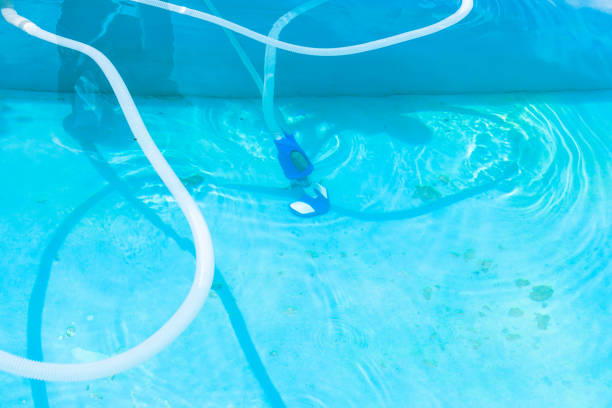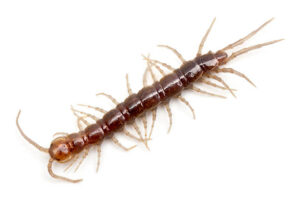A manual vacuum is essential for every pool owner. An automatic pool cleaner can clean your pool but won’t vacuum algae or cloudy water.
This is our complete guide on how to quickly and efficiently vacuum an above-ground or inground pool so that you can get back into swimming.
How to Vacuum Your Swimming Pool
Pool vacuum heads (also known as a head).
To attach to the vac head, use the telescopic pole.
Pool vacuum Hose Long enough to reach all areas of your pool.
Vacuum plate or skim vac (optional if you wish to use the Skimmer Basket).
Our Pool Care Video Course from Swim University(r) will provide more video tutorials on pool maintenance. This course will show you how to connect your vacuum and vacuum your pool efficiently so that you can swim more.
This guide will show you how to install and clean a manual pool vacuum
Before you start, ensure the pool pump is turned on, and the filter works. Also, make sure you have a good starting pressure. A D.E. Backwash, your D.E., Make sure that the cartridges are clean and ready for use if you have a cartridge filter. This is the complete guide to cleaning each type of filter.
Important: If your water is cloudy or stained with algae, change the filter valve settings to the “waste” setting. This bypasses the filter and allows water to flow through the waste port. Attach a backwash hose to a cartridge filter. While you vacuum, your pool water level will fall. To add water to your pool while cleaning, use a garden hose.
Attach Vacuum Head & Hose to the Telescopic pole
First, make sure the pump is running. Attach the vacuum head at the end of the telescopic stick. Attach the vacuum head to one end of the flexible hose. Attach one end to the vac head to keep the hose in place if it is slippery.
The weighted triangular pool vacuum head is an excellent way to clean your pool. The vacuum head’s bottom is weighted to help it stay in place when vacuuming.
To remove air, fill the vacuum hose with water
The vac head, Telescopic Pole, and hose should be placed in the pool. The other end of the vacuum Hose should be placed against the return jet. This will force water through the hose and push all the air out.
Triple-check that the vacuum inlet is closed to the pump. You risk particles and debris being sucked into the pump, which can cause irreparable damage to all your hard work.
Note: Air bubbles will rise from the vacuum head on the floor of your pool. All air will be out of the hose once the bubbles stop.
Telescopic Swimming Pool Pole
Use your leaf net, vacuum, or brush to reach those difficult places. The pros use this professional-grade telescopic pole to clean their pools thoroughly.
Amazon: Buy NowClick this link to make a purchase. We will earn a commission without additional cost.
Attach a vacuum hose to the pool skimmer
Attach the skim-vac plate to the end you previously placed against the return flow, then block the opening with your hands and transfer it to the skimmer. It should be inserted in the basket on top of it and sealed well.
You can remove the skimmer basket if you are not using a vacuum plate. Block the end of your water-filled hose with your hand. Next, insert the hose into your skimmer’s inlet.
NOTE: The suction created by any method will pull material through the vacuum head, through the hose into the pump, and finally through the filter system. To restore vacuum suction, repeat the steps.
Skim Vac Pool Skimmer Plate
This plate can steady your skimmer basket while you manually vacuum your pool. You would have to take out the skimmer basket without it.
Amazon: Buy NowClick this link to make a purchase. We will earn a commission without additional cost.
Start Vacuuming
Once you have a powerful siphon built using your filter system, it is possible to vacuum the pool’s floor. Start at the bottom of your pool. If your collection is round, you can start on one side and then move across the floor.
Clean with slow, long, and sweeping strokes. To avoid any debris being left behind, ensure your strokes overlap slightly. Rushing can cause debris to be kicked up, decreasing visibility and making it take several hours to settle again.
If the water becomes cloudy, allow it to settle for a few hours, then vacuum again.
Switch off the pump to stop the vacuum force from building up and free the vac head. Ensure that you check the pressure gauge on your pool filter before vacuuming. If your pool filter’s pressure exceeds the recommended levels, you should take a break and rewash it.
Do a final clean by disconnecting the vacuum and cleaning it
After you have vacuumed the entire pool, it is time to clean up so you can get back to swimming.
Take the vacuum head off the telescoping pole and drain any remaining water. Attach the cleaning brush to the bar and scrub the sides of your pool with it.
Clean the pump strainer basket and rewash the filter if you have a multiport, or use the “Filter.” After vacuuming, here’s a complete guide to cleaning your pool filter
If you used the “Waste” setting to vacuum your pool, switch it back to “Filter” and continue adding water until you are satisfied with the results.
After you have topped up your pool, check it and adjust your pH, chlorine, and alkalinity as needed.
You can rinse your equipment with water, dry it, and store it in storage. This will keep your equipment in top condition and prevent corrosion.
The vac head doesn’t have to be dreadful! When it comes time to vacuum your pool, you don’t have to be afraid of the vac head.


